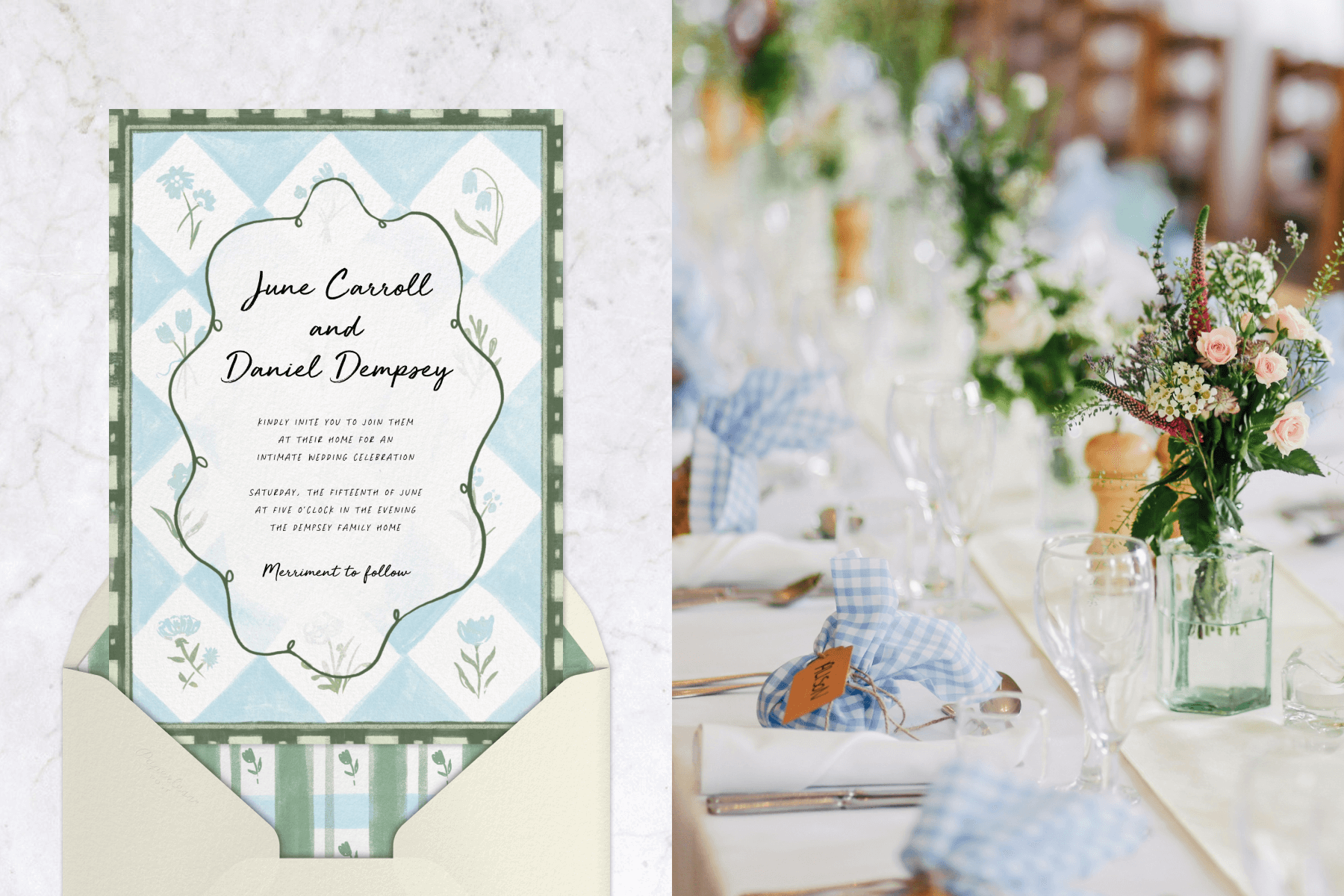How to throw a sustainable party

Anyone who has hosted a party (and had to clean up afterward) knows it can end up being more than a little wasteful. From the food to the decor and supplies, a lot of things end up going straight into the trash when the last guest has left. Another downside? Many party essentials sold in stores use plastic and other disposable materials that are harmful to the environment.
In a time when many people are just starting to take our ecological footprint seriously, sustainable event planning is likely to become a major consideration when hosting future celebrations. When it’s your turn to plan or host, there are a lot of ways you can limit your environmental impact, from eco party supplies and decor to ideas for activities that produce less waste than traditional parties.
Table of Contents
Eco-friendly decorations for a sustainable party

It’s not as hard as you may think to deck out your party space with reusable, recyclable, or compostable items. Many DIY decorations are simple and affordable—and they make your party feel more personal.
- Make your own candles: The perfect candle scent is one you can customize yourself.
- Eco-friendly leaf confetti: No plastic or sacrificed trees needed, just a hole-punch and leaves or greenery you can collect outside.
- Dried citrus garland: This natural, festive DIY decor is perfect for any time of year.
Sustainable serving supplies

We promise you don’t need all those disposable cups, plates, and plastic silverware! There are affordable, easy options that cut down on waste and can even add a unique touch of personality to your party.
- Compostable or edible cups and straws: We love Loliware, a company that is “pioneering the post-plastic movement” by making straws out of plant-based, food-grade materials that disappear through composting or natural processes. Unlike plastic straws, these straws won’t sit in oceans or landfills for a hundred years.
- Hollowed-out fruit: Who doesn’t love enjoying a beverage straight from a pineapple or coconut? Especially if you’re having a luau-themed party or outdoor summer party, hollowed fruit acts as a great replacement for plastic cups—and they add to the mood.
- Mason jars: Swap the Solo cups for classic glass jars. They are super durable and you can use them for years to come.
- Cloth napkins: You can find them anywhere, but we love the wide assortment you can find on sites like Etsy. Plus, you get to enjoy them long after the party.
- Compostable centerpieces – Florals and greenery make great centerpieces that break down naturally. You can get them from a florist or make your own!
Sustainable ideas for adult birthdays

From creative cocktails sans cups, to renting supplies that you can return later, you can still go all out for an adult birthday party.
- Upcycle a stained tablecloth: Use natural dyes (avocado, eucalyptus, etc.) to tie-dye a tablecloth instead of tossing it.
Cocktails in popsicle form: No drinkware required. - Zero-plastic cocktail containers: See above for our hollowed fruit idea that’s the perfect complement to a tropical-themed birthday party.
- Rentable party supplies: Social Studies is a great source for entire party “looks” you can have delivered to your door and return when you’re done.
Sustainable ideas for kids’ birthdays and baby showers

While there are plenty of kids’ party packs filled with plastic table covers, noise-makers, and other party supplies, we think the DIY route is not only more sustainable—it’s more fun for the kids. DIY decor and supplies are perfect for kids’ birthday parties because some can even double as party activities.
- DIY birthday hats or flower crowns: Skip the ones from the store that will end up in the trash.
- Treats that require no plates: Think cake pops, caramel apples, and dinosaur popsicles.
- DIY piñata: No need to buy a new one—paper mache is easier than you may think. Get crafty with old cardboard boxes and newspapers.
- Homemade playdough in glass jars: Make it a party activity or use it as a party favor kids can take home.
Sustainable ideas for weddings

Looking specifically for sustainable wedding decor and ideas? From the flowers to the utensils to the online wedding invitations, we have you covered with our post dedicated to eco-friendly wedding supplies and decor.
Skip the snail mail—send online invitations

Not only are online invitations affordable and easy to send in a snap; they’re also not going to end up in anyone’s garbage bin. Our diverse assortment of online party invitations includes exclusive designer collections and unique, creative designs that are just as elegant as paper stationery, but better for the environment (and more affordable).
There are a lot of reasons we like online party invitations that go beyond the sustainability factor. Our digital invitations give you way more flexibility, allowing you to send updates to guests and make changes as plans may shift. With instant delivery and RSVP tracking, you also have peace of mind and don’t have to worry about someone claiming their invite got lost in the mail. Add a Registry Block to your invitation and attach a link to your gift registry for easy access for guests.
Ask guests not to wrap their gifts
They probably won’t mind, since it’s one less thing for them to do! As far as wording goes, you can keep it simple:
Giving a gift? You can skip the wrapping paper! It’s just one little way we’re trying to be more eco-friendly.
Another option is to link to eco-friendly wrapping paper, like Wrappily, which prints colorful patterns on 100% recyclable newsprint.
Start with the online party invitations
Now that you’ve got some sustainable party ideas, start with the invitations. Customize any of our many online party invitations to your heart’s content, then let us keep tabs on the RSVPs (so you can do the fun part—planning the party).
Whatever the occasion, find exclusive designs to suit your style and make planning a breeze.

